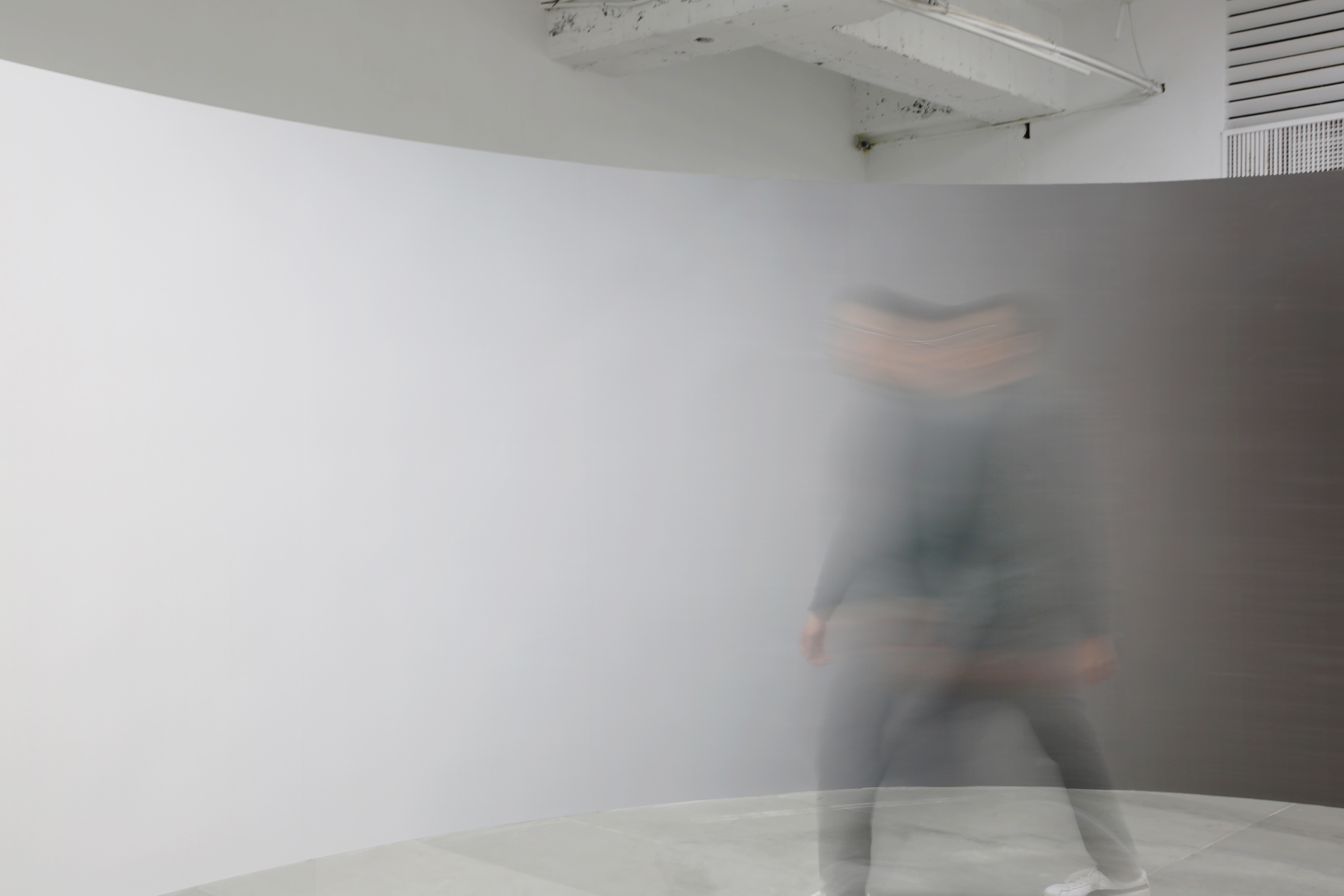


Vista (Solo Exhibition)
2021
Project Fulfill Art Space
Taipei, Taiwan
「人總是會掛念著什麼。如果人注意到他的這種掛念,那麼他也會發現它和一種意向的緊張狀態有關。人一直在追逐些什麼,瞄準什麼東西,不管是在空間或時間上。在空間上距離遙遠的東西,或者是在時間上還沒有到來的事物。」
──呂迪格・薩弗蘭斯基著,《時間之書》(林宏濤 譯)(台北市:商周出版),頁76。
2020年底徐婷在台南麻豆駐村,深刻感受到自己是依賴城市生活型態的人,於是產生回台北以都市生活背景來思考創作的想法。若以視線的距離來形容城市與鄉野,在都市中我們很難將眼光瞄準向遙遠的距離,在擁擠的街道與建築空間中,抬頭望向天空的視線彷彿是我們可看見的唯一最遠景。徐婷感受到在城市中生活的狀態是相對不安的,她以德國哲學家薩弗蘭斯基在時間之書裡的一文字作引用,而此段章節剛好是在談論「憂慮的時間」。這段文字讓她聯想到拿著相機用長鏡頭瞄準各處的當下:「若把整個創作過程都想像成在拍一張照片,一直以來在我的創作中,都像是在對焦一個還沒有到達的地方。」
徐婷將空間的樣貌成為作品呈現結果的依據之一,也是與周遭環境產生連結的一種方式。她以往的展出中特別在乎轉角、走道底端、或進入一個空間所第一時間看到的景象,她很喜歡居家風水裡對於這樣的空間結構的一個名稱叫「端景」,感覺將視覺的終點擴張成延續的風景畫面。進入展覽第一件作品「遠景-2」也是這次主視覺的影像,設計成像望眼鏡一樣的兩個圓圈,意指一個窺探遠方畫面的動機,兩個圓的形式也像是預告隨後展場中的兩個圓形光點。走進展場看到的畫面是攝影作品融入在不同曲線的牆面中,這時幾乎整個畫廊空間會同時映入眼簾,藝術家用展場中一道柱子,創造一分為二的場景,一近一遠。在走進空間底端最後,懸掛了一件小作品於折返的路徑中,作為展覽最後一個畫面。
The inspiration for the exhibition concept stems from Hsu Ting’s time as an artist in residence in the countryside of Madou District, Tainan. During this time Hsu deeply felt her own reliance on an urban lifestyle. When she returned to Taipei, she began to create a series of works based on life in the city. Compared to the wide-open expanse of the countryside, in a crowded city, it is almost impossible for a person to aim their line of sight at a far distance, being constantly disrupted by towering architecture, it seems that the farthest view that can be seen in the city is looking upward towards the sky.
“If you think of my entire creative process as taking a photo, within my art practice, I always seem to be focusing on a place that has not yet arrived.”
Hsu places emphasis on the characteristics of the space as one of the creative elements in her work, allowing a connection to the surrounding environment. Her distinctive quality of focusing on the corners, the view at the end of a pathway, or the first impression when entering a space. These features are termed as ‘vista’ in feng shui, as if an interior view is expanded into a landscape.
As the visitor enters the exhibition space, they will first see the work Vista – 2, which is also used as the design on the exhibition flyer, where the image is formed into two circles mimicking binoculars, evoking an invitation to peer into a distant scene. Entering further into the exhibition, the space opens to an abstract composition of Hsu’s photographic imagery set against carefully crafted architectural walls. A soft curve and a sharp corner painted with a smoke-colored monochrome gradient leads your eye across the entire gallery space. Hsu incorporates the gallery’s central pillar to create a split-screen like effect, a sense of two distances both near and far. Two circles of light placed at opposite ends of the space echoes the two circles on the flyer design – creating a layered motif that provokes the imagination of looking, light, object and space.
Related text:
在落差中存有:徐婷個展《遠景》的造像術
文 | 許鈞宜( Hsu Chun-Yi), 2022